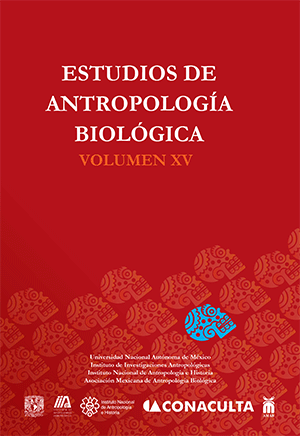Osteoarqueología de campo aplicada al análisis del uso ritual de la fauna: el caso de la Ofrenda 126 del Templo Mayor de Tenochtitlan
DOI:
https://doi.org/10.22201/iia.14055066p.2011.42770Keywords:
Osteoarchaeology, faunal remains, offering, Templo MayorAbstract
Offering 126 was discovered in 2008 during the 7th field season of the Templo Mayor Project. This deposit was located beneath the monolith of the Earth Goddess Tlaltecuhtli, corresponding with the reign of Ahuítzotl (1486-1502 AD). The offering is characterized by an extraordinary wealth of biological materials, among which are the remains of felines, canines, and birds. These specimens provide various kinds of evidence of cultural modification, since they were placed as isolated bones and articulated segments and present numerous cut marks, defleshing marks and fractures. The large quantity of specimens and considerable superposition of the osteological elements necessitated the implementation of a meticulous documentation system that recovers most of the information in the field. This paper presents the excavation methodology, which combines proposed approaches for Osteoarchaeology in the field, developed by specialist in Physical Anthropology, as well as the utilization of graphic documentation systems with the program AutoCAD.
Downloads
Downloads
How to Cite
Issue
Section
License

http://creativecommons.org/licenses/by-nc-nd/4.0/

